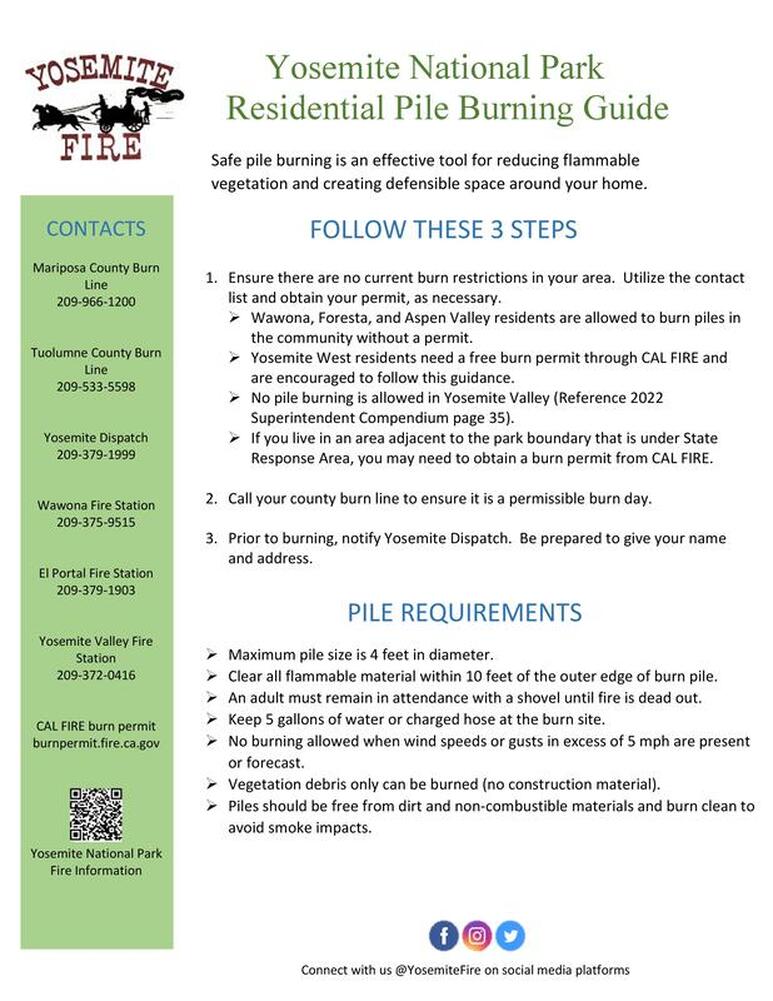WawonaNews.com - December 2022
Wawona Community News December Edition
There's been a problem with the delivery of the Wawona Community News Edition for this month which will hopefully be solved soon, but in the meantime, and just in case, here is the digital version.
There's been a problem with the delivery of the Wawona Community News Edition for this month which will hopefully be solved soon, but in the meantime, and just in case, here is the digital version.
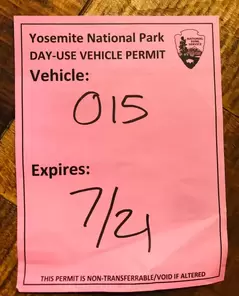
No Yosemite Vehicle Reservations in Summer 2023
The National Park Service (NPS) announced today that it would not require a Temporary Peak Hours vehicle reservation to enter Yosemite National Park in summer 2023.
The decision follows three years of a reservation system that originally was implemented to prevent the spread of COVID-19 and later assist with significant construction projects in the park. The decision will make it easier for travelers to plan their visit to Yosemite Mariposa County.
The suspension of the reservation system in 2023 will allow NPS to conduct a full environmental assessment in the coming year which will include public input. YMCTB and the Mariposa County Lodging Association members look forward to participating and engaging with the National Park Service and providing business-based data and experience in those conversations.
YMCTB and the Mariposa County Lodging Association look forward to participating and engaging with the National Park Service and providing business-based data and experience in those conversations.
Peak-Season summer domestic and international visitation to Yosemite has been at an all-time low. YMCTB does not believe that removing the peak season vehicle reservation requirement will create an overtourism issue in 2023 as visitors continue to deal with poor international exchange rates for the Euro and Pound vs. the strong U.S. Dollar, inflation, increased costs for gas/fuel, rental cars, dining and lodging and airlift from our international and domestic markets.
If you have questions, comments, or concerns, please feel free to contact us at the Tourism Bureau. Email [email protected] or call (209)742-4567.
The National Park Service (NPS) announced today that it would not require a Temporary Peak Hours vehicle reservation to enter Yosemite National Park in summer 2023.
The decision follows three years of a reservation system that originally was implemented to prevent the spread of COVID-19 and later assist with significant construction projects in the park. The decision will make it easier for travelers to plan their visit to Yosemite Mariposa County.
The suspension of the reservation system in 2023 will allow NPS to conduct a full environmental assessment in the coming year which will include public input. YMCTB and the Mariposa County Lodging Association members look forward to participating and engaging with the National Park Service and providing business-based data and experience in those conversations.
YMCTB and the Mariposa County Lodging Association look forward to participating and engaging with the National Park Service and providing business-based data and experience in those conversations.
Peak-Season summer domestic and international visitation to Yosemite has been at an all-time low. YMCTB does not believe that removing the peak season vehicle reservation requirement will create an overtourism issue in 2023 as visitors continue to deal with poor international exchange rates for the Euro and Pound vs. the strong U.S. Dollar, inflation, increased costs for gas/fuel, rental cars, dining and lodging and airlift from our international and domestic markets.
If you have questions, comments, or concerns, please feel free to contact us at the Tourism Bureau. Email [email protected] or call (209)742-4567.
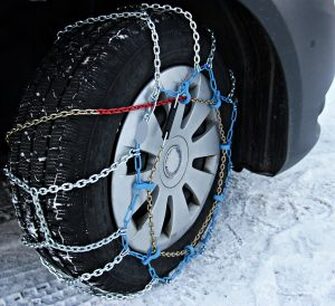
Let’s Talk Chain Controls
Posted by: Trisha Jacobs SNO
MOUNTAIN COMMUNITIES–Every year I hear the same questions about chain controls in our communities. Do I have to carry chains? What do R1, R2, and R3 mean? My vehicle is four-wheel drive, do I still need chains? Keep reading for the answers to these questions and more.
During the winter months, motorists may encounter traction chain controls in the mountain areas within California. When chain controls are established, signs will be posted along the road indicating the type of requirement.
If you are in a rental car, know that some rental car companies do not allow chains or traction devices to be used on their vehicles. Check before you go.
Also, be aware that some vehicle types do not recommend using chains or traction devices on them at all. Check your owner’s manual for details.
If you’re not familiar with using chains or traction devices there are two main types: Cables and Chains. They both have their own pros and cons. I’ve lived in the foothills and mountains for over 30 years and used both types. If you’ve never used either one, I’d recommend cables. They are easier to put on and deal with, in my opinion. I also recommend practicing at home in your flat driveway a few times BEFORE you find yourself in the middle of a snowstorm, kids crying in the back seat, on the side of the road trying to learn how to put on chains.
For more winter driving tips and how to keep your family safe this winter, check out our “Are You Ready For Winter” article.
*Snow-tread Tires: The California Vehicle Code, Section 558 defines a snow-tread tire as follows, “A ‘Snow-tread tire’ is a tire which has a relatively deep and aggressive tread pattern compared with a conventional passenger tread pattern”. Snow-tread tires can be identified by examining the sidewall of the tire where the letters MS, M/S, and M+S, or the words MUD AND SNOW have been stamped into the sidewall.
*Tire Traction Devices: The California Vehicle Code, Section 605 defines tire traction devices as follows: “Tire Traction Devices are devices or mechanisms having a composition and design capable of improving vehicle traction, braking and cornering ability upon snow or ice-covered surfaces. Tire traction devices shall be constructed and assembled to provide sufficient structural integrity and to prevent accidental detachment from vehicles. Tire traction devices shall, at the time of manufacture or final assembly, bear a permanent impression indicating the name, initials, or trademark of the assembling company or primary manufacturer, and the country in which the devices were manufactured or assembled in final form.”
Posted by: Trisha Jacobs SNO
MOUNTAIN COMMUNITIES–Every year I hear the same questions about chain controls in our communities. Do I have to carry chains? What do R1, R2, and R3 mean? My vehicle is four-wheel drive, do I still need chains? Keep reading for the answers to these questions and more.
During the winter months, motorists may encounter traction chain controls in the mountain areas within California. When chain controls are established, signs will be posted along the road indicating the type of requirement.
- You must stop and put on chains when highway signs indicate chains are required. You can be cited by the California Highway Patrol and fined if you don’t. You will usually have about a mile between the “Chains Required” signs and the checkpoint to install your chains.
- Control areas can change rapidly from place to place because of changing weather and road conditions.
- The speed limit when chains are required is 25 or 30 miles an hour.
- When you put on chains, wait until you can pull completely off the roadway to the right. Do not stop in a traffic lane where you will endanger yourself and block traffic.
- Chain Installers: If you use the services of a chain installer, be sure to get a receipt and jot the installer’s badge number on it. Remember, chain installers are independent business people, not Caltrans employees. Having the badge number may help with any misunderstandings later. Chain installers are NOT allowed to sell or rent chains.
- When removing chains, drive beyond the signs reading “End of Chain Control” to a pull-off area where you can safely remove them.
- Requirement 1 (R-1): Chains are required on all vehicles except passenger vehicles and light-duty trucks under 6,000 pounds gross weight and equipped with snow tires on at least two drive wheels. Chains must be carried by vehicles using snow tires. All vehicles towing trailers must have chains on one drive axle. Trailers with brakes must have chains on at least one axle.
- Requirement 2 (R2): Chains or traction devices are required on all vehicles except four-wheel/all-wheel drive vehicles with snow-tread tires on all four wheels.
NOTE: (Four-wheel/all-wheel drive vehicles must carry traction devices in chain control areas.) - Requirement 3 (R3): Chains or traction devices are required on all vehicles, with no exceptions.
If you are in a rental car, know that some rental car companies do not allow chains or traction devices to be used on their vehicles. Check before you go.
Also, be aware that some vehicle types do not recommend using chains or traction devices on them at all. Check your owner’s manual for details.
If you’re not familiar with using chains or traction devices there are two main types: Cables and Chains. They both have their own pros and cons. I’ve lived in the foothills and mountains for over 30 years and used both types. If you’ve never used either one, I’d recommend cables. They are easier to put on and deal with, in my opinion. I also recommend practicing at home in your flat driveway a few times BEFORE you find yourself in the middle of a snowstorm, kids crying in the back seat, on the side of the road trying to learn how to put on chains.
For more winter driving tips and how to keep your family safe this winter, check out our “Are You Ready For Winter” article.
*Snow-tread Tires: The California Vehicle Code, Section 558 defines a snow-tread tire as follows, “A ‘Snow-tread tire’ is a tire which has a relatively deep and aggressive tread pattern compared with a conventional passenger tread pattern”. Snow-tread tires can be identified by examining the sidewall of the tire where the letters MS, M/S, and M+S, or the words MUD AND SNOW have been stamped into the sidewall.
*Tire Traction Devices: The California Vehicle Code, Section 605 defines tire traction devices as follows: “Tire Traction Devices are devices or mechanisms having a composition and design capable of improving vehicle traction, braking and cornering ability upon snow or ice-covered surfaces. Tire traction devices shall be constructed and assembled to provide sufficient structural integrity and to prevent accidental detachment from vehicles. Tire traction devices shall, at the time of manufacture or final assembly, bear a permanent impression indicating the name, initials, or trademark of the assembling company or primary manufacturer, and the country in which the devices were manufactured or assembled in final form.”
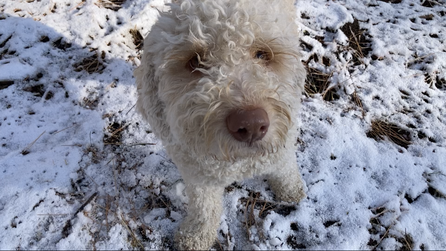
YOSEMITE-WAWONA ELEMENTARY CHARTER SCHOOL
Board of Directors Regular Meeting
Tuesday, Nov. 15, 2022
5:30 P.M.
Wawona Elementary School
7925 Chilnualna Falls Road
Wawona, CA
MONTHLY ITEMS AND FINANCIAL REPORTS
3.1- Approval of Agenda
3.2– Approval of Minutes of the regular meeting of Oct. 11
3.3 - Approve Warrants/Payroll
3.4 – Accept Donations to YWECS
ACTION ITEMS
INFORMATION ITEMS
Board of Directors Regular Meeting
Tuesday, Nov. 15, 2022
5:30 P.M.
Wawona Elementary School
7925 Chilnualna Falls Road
Wawona, CA
- CALL TO ORDER
- ROLL CALL
MONTHLY ITEMS AND FINANCIAL REPORTS
- CONSENT AGENDA
3.1- Approval of Agenda
3.2– Approval of Minutes of the regular meeting of Oct. 11
3.3 - Approve Warrants/Payroll
3.4 – Accept Donations to YWECS
- HEARING OF PERSONS WISHING TO ADDRESS THE BOARD
ACTION ITEMS
- APPROVE THE REVSIONS TO THE 2022-23 ANNUAL BUDGET
- APPROVE THE EXTENDED LEARNING OPPORTUNITIES GRANT FOR THE 2022-23 SCHOOL YEAR
- APPROVE THE HIRING OF LUSA ANDREWS AS AN INSTRUCTIONAL ASSISTANT FOR THE BREAKFAST CLUB.
- APPROVAL OF THE EDUCATOR EFFECTIVENESS PLAN FOR THE 2022-23 SCHOOL YEAR
INFORMATION ITEMS
- STAFF REPORTS
- BOARD MEMBER COMMENTS
- FUTURE AGENDA ITEMS
- NEXT BOARD MEETING
- ADJOURNMENT
End of Fire Season
Yosemite National Park experienced widespread precipitation and snow accumulation recently. The closure of the fire season occurs when there is a season ending precipitation event totaling two inches or more. Helicopter 551, Yosemite's helicopter that was contracted for the fire season, has now left the park. Seasonal fire personnel are completing their assignments and will soon be leaving the park as well.
Consistent lower fire danger along with the recent precipitation has made residential pile burning permissible. Residential pile burning is important for reducing fire hazards and can only be conducted on permissible burn days. Property owners and residents must follow all burning guidelines. For a step-by-step guide to safe pile burning, please reference the steps below:
Yosemite National Park experienced widespread precipitation and snow accumulation recently. The closure of the fire season occurs when there is a season ending precipitation event totaling two inches or more. Helicopter 551, Yosemite's helicopter that was contracted for the fire season, has now left the park. Seasonal fire personnel are completing their assignments and will soon be leaving the park as well.
Consistent lower fire danger along with the recent precipitation has made residential pile burning permissible. Residential pile burning is important for reducing fire hazards and can only be conducted on permissible burn days. Property owners and residents must follow all burning guidelines. For a step-by-step guide to safe pile burning, please reference the steps below:
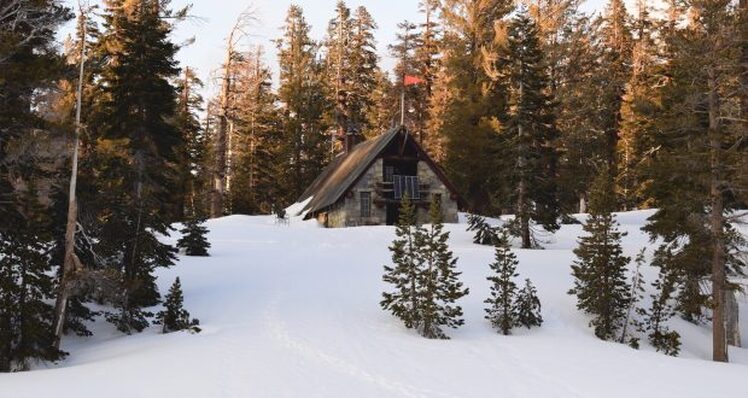
Ostrander Ski Hut To Open After Two-Year Hiatus
Posted by: SNO Staff November 4, 2022
Historic Ostrander Ski Hut in Yosemite’s Backcountry Will Open for the 2022-2023 Winter Season After a Two-Year Hiatus
Yosemite National Park, November 3, 2022 – Ostrander Ski Hut, the cherished rustic stone cabin used by experienced cross-country skiers who make the strenuous 10-mile journey from Badger Pass Ski Area to Ostrander Lake in Yosemite National Park’s backcountry, will be open for the 2022-2023 winter season after a two-year pandemic-fueled hiatus.
Online Reservations Open November 16, 2022, at Yosemite.org
Reservations to book an overnight bunk at the hut will become available online on November 16, 2022, at 9 a.m. Pacific Time on Yosemite Conservancy’s website at https://yosemite.org/experience/ostrander-ski-hut/.
Yosemite Conservancy, in partnership with the National Park Service, manages the two-story stone ski hut overlooking Ostrander Lake at 8,500 feet. Built in 1941, Ostrander Ski Hut is listed on the National Register of Historic Places and attracts backcountry skiers and snowboarders looking to ski the steep slopes in the cirque above Ostrander Lake and enjoy stunning views of Half Dome, the Clark Range, and Mount Hoffmann.
“It’s a strenuous cross-country skiing trek to the cabin, but the rewards of scenery and serenity are undeniable,” said Yosemite Conservancy President Frank Dean.
Ostrander Ski Hut is suitable for individuals or groups up to 12. It is staffed by a full-time hut keeper and is anticipated to be open from December 23, 2022, through April 1, 2023. Facilities include single bunks with mattresses, community cookware stocked in a common kitchen, wood for heating, solar-powered electric lights for evening use, and two outdoor toilet facilities. Nightly rates are $50 per person, per night. Conservancy donors are eligible for a reduced rate by emailing [email protected] prior to the live booking date. Proceeds collected from the ski hut are used to operate and maintain it for future generations to enjoy.
Thanks to generous donors, in recent years Yosemite Conservancy has provided more than $140 million in grants to the park to restore trails and habitat, protect wildlife, provide educational programs, and more. The Conservancy’s guided adventures, art classes, volunteer opportunities, donors, wilderness services, and bookstores help visitors of all ages to connect with Yosemite. Learn more at yosemite.org or 415-434-1782.
Posted by: SNO Staff November 4, 2022
Historic Ostrander Ski Hut in Yosemite’s Backcountry Will Open for the 2022-2023 Winter Season After a Two-Year Hiatus
Yosemite National Park, November 3, 2022 – Ostrander Ski Hut, the cherished rustic stone cabin used by experienced cross-country skiers who make the strenuous 10-mile journey from Badger Pass Ski Area to Ostrander Lake in Yosemite National Park’s backcountry, will be open for the 2022-2023 winter season after a two-year pandemic-fueled hiatus.
Online Reservations Open November 16, 2022, at Yosemite.org
Reservations to book an overnight bunk at the hut will become available online on November 16, 2022, at 9 a.m. Pacific Time on Yosemite Conservancy’s website at https://yosemite.org/experience/ostrander-ski-hut/.
Yosemite Conservancy, in partnership with the National Park Service, manages the two-story stone ski hut overlooking Ostrander Lake at 8,500 feet. Built in 1941, Ostrander Ski Hut is listed on the National Register of Historic Places and attracts backcountry skiers and snowboarders looking to ski the steep slopes in the cirque above Ostrander Lake and enjoy stunning views of Half Dome, the Clark Range, and Mount Hoffmann.
“It’s a strenuous cross-country skiing trek to the cabin, but the rewards of scenery and serenity are undeniable,” said Yosemite Conservancy President Frank Dean.
Ostrander Ski Hut is suitable for individuals or groups up to 12. It is staffed by a full-time hut keeper and is anticipated to be open from December 23, 2022, through April 1, 2023. Facilities include single bunks with mattresses, community cookware stocked in a common kitchen, wood for heating, solar-powered electric lights for evening use, and two outdoor toilet facilities. Nightly rates are $50 per person, per night. Conservancy donors are eligible for a reduced rate by emailing [email protected] prior to the live booking date. Proceeds collected from the ski hut are used to operate and maintain it for future generations to enjoy.
Thanks to generous donors, in recent years Yosemite Conservancy has provided more than $140 million in grants to the park to restore trails and habitat, protect wildlife, provide educational programs, and more. The Conservancy’s guided adventures, art classes, volunteer opportunities, donors, wilderness services, and bookstores help visitors of all ages to connect with Yosemite. Learn more at yosemite.org or 415-434-1782.

